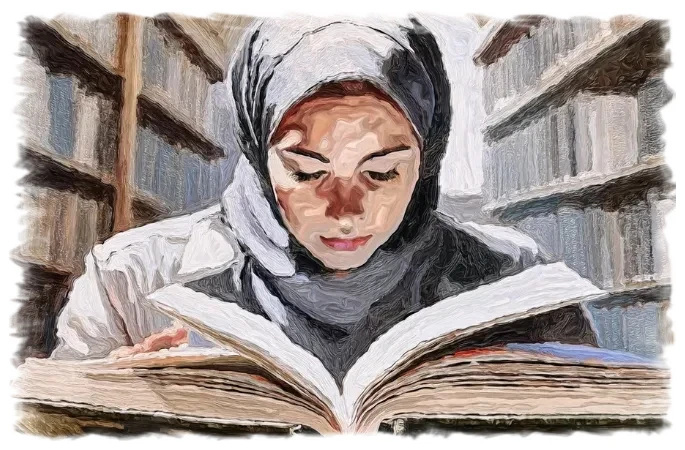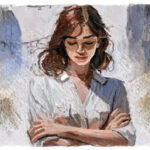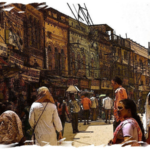In the heart of this sprawling city, where the neon lights flicker like distant stars in an urban galaxy, there exists a place that dances on the boundary between reality and dreams, the Bull Ring.
Standing sentinel in the pulsating core of Birmingham’s vibrant shopping district is a famous bronze giant known simply as the Bull. It is more than a landmark. It is a creature with a silent tale etched in the crevices of its metallic skin. This colossal creature, twice the size of a living bull, invites newcomers to pause, to stand before it, or even climb upon its metallic form to capture the moment with a photograph. In winter, a whimsical touch adorns the Bull, when it is donned in a red woolen shirt and a knitted beanie hat, creating a festive spectacle.
Behind the mask of merriment lies a tragic history, echoing the cruel practices of medieval bull rings found in many countries. In those times, they would first release a bull inside the iron ring. Then hungry dogs would be unleashed in droves attacking the bull ferociously. Unable to withstand the assault, the bull would eventually succumb to death. This cruel practice used to be a pastime in medieval times. The Birmingham Bull Ring once neighboured butcher shops, where a belief was held that the meat of a bull subjected to such torment would be exceptionally tender. Thankfully, the practice was later banned, leaving the Bull a silent testament to a bygone era.
Birmingham unfolds like a silk saree, rich in hues and textures, every part a vibrant thread in the city’s fabric. In the bustling market, vibrant with fruits, vegetables, yarn, and dazzling textiles, a fish market displays a vibrant array of colours. Tall buildings house shops offering luxurious perfumes, clothing, and bustling restaurants. Diverse human voices and faces fill the air, with callers proclaiming Islam through the soothing verses of the Qur’an on one side, while on the other, people call in microphones, urging others to turn to Christ today.
As one traverses the city center, a fusion of aromas dances in the air, the heady blend of spices, the rich aroma of roasted coffee, and the enchanting whispers of perfumes that linger like a sweet melody.
Once hailed as Workshop of the World, Birmingham inscribes its vibrant history on every brick and alleyway. From crafting elegant fountain pens to forging powerful steam engines, the city has undergone a profound transformation, evolving from the clutches of starvation to remarkable prosperity. The surge of new industries and opportunities attracted a tide of migrants, shaping Birmingham into a multicultural metropolis that proudly claims its position as the second-largest city in England.
Amidst the lively pulse of the Bull Ring, I walk towards the other end of the City Centre.
I slip away, seeking solace within the doors of the Birmingham Public Library – a sanctuary of tranquility amid the city’s vivacious chaos. I harbour a deep affection for soft sounds, finding peace in their gentle embrace, akin to the comfort of listening to a roaring downpour in the middle of the quiet night. The library, enveloped in profound silence, heightens the senses. Conversations unfold in hushed tones, the rustling of pages in the slightest breeze, the muffled footsteps of different footwear, and the delicate chime of bells hanging on the walls.
In the library, sunlight weaves a distinct art, filtering through tall windows to dance among the rows of books. Its rays beckon the soul to distant realms, casting a play of light and shadow that captivates the senses. Seated in quiet contemplation, I realise that within the library’s embrace, there is more to just reading. There is an immersion into a world where scents intertwine with stories.
Libraries, much like people, possess their own unique fragrance. A blend of old books, polished wood, and the intangible traces of countless visitors. This aroma transports me back to the Peradeniya University library, with its centuries-old scent wafting through the cold air that breezes down from Hanthana Hills, carrying the earthy fragrance of Yellow Poui. The library becomes a vessel, evoking memories and connecting me to moments spent within my old University library’s sacred walls.
Birmingham Public Library, like all the other libraries, has a partly open door, a secret passage to a world waiting to be discovered, hidden from everyone’s view. It invites you to a place where time doesn’t feel so strict and distant. As you read, the lines between past and present become blurry. You travel through the stories crafted by others and walk through the memories of your own life.
Today, I cannot bring myself to decide what to read. A book catches my attention – a large, inviting photo album resting gently on the table. Its simple yet bold cover proudly says, “Chronicles of Vision – Cameron McIlroy ‘s Journey Through the Lens.”
Eagerly, I cradle the book as if holding a kitten, gently placing it on the table. The weight of its broad pages promises a sensory journey. As I spread its story-laden sheets, charming pictures reveal themselves, each capturing moments that can make one close their eyes and allow their mind to melt. The journey begins, traversing countless narratives encapsulated in McIlroy’s photographs; each is a window for untold stories.
At the back of the book were details about the photographer, Cameron McIlroy. He was the one who skillfully captured the famous poignant image of an Afghan widow with a veiled face. The image is reminiscent of the media frenzy following the 9/11 attacks, a picture etched into memory. The woman’s magnetic, deep sea-green eyes seem to reach into the very soul, as if pulling us into an endless well. Cameron, a versatile photojournalist, weaves captivating narratives through his lens. His photos are truly remarkable. I have seen the award-winning Afghan Woman’s picture in an issue of Global Geo Magazine. Observing the unique perspectives he captures,I can’t help but acknowledge my own photography attempts pale in comparison.
As I flip through the silky pages, one photograph stands out. A portrayal of a school classroom. Its allure transcends the constraints of time and space, casting a spell that brings my hometown, fresh in memory, to embrace me from afar.
During our first year in advanced-level classes, our school held a notable reputation in the district for high university admissions in Tamil medium. Boys and girls from other areas of the island chose our school for their studies. Our Commerce stream class was exclusive to girls, while the boys had separate classes. The uniqueness of our building, bordered by a school on one side and surrounded by fences on the other two, added to its charm. Beyond the Mango trees, a refreshing breeze often swept through.
Situated in one corner of the school premises, our Commerce class enjoyed a cosy spot all to itself. In our younger years, Pathun Aachhi’s house and shop stood on that side. I can still picture Aachchi near her house and the fence, offering boiled Ceylon olives aka veralikai, lovi fruits soaked in salt, vadai, and hoppers. But, as with many things in life, Aachchi’s house vanished as time passed, making way for new buildings.
During the rainy monsoon season, teachers would sometimes skip the sessions and stay indoors. We would snuggle on the parapet wall, relishing the gentle rain, engaged in lively conversations. My palms would feel warm on chilly days. Rihana and Munshiba would often grab my hands and place them against their cheeks for comfort. Mazeena and Shamila would take turns singing Nagoor Hanifa’s songs or the latest melodies from movies.
It was a Wednesday. Madar Deen Sir’s class was in progress when we noticed a white man, accompanied by the school’s deputy head, wandering through all the classrooms. The man wore a khaki shirt and trousers, with a heavy bag slung over his shoulder. His broad, red face with a moustache reminded us of a character from an English film we could not recall. He greeted us with a wave as he entered our class, and we sat there, curious to see what would happen next. The photographer moved around, peeking through the short walls surrounding our classroom.
A satisfied smile illuminated his face. Haneefa Sir joyfully announced that our class had been chosen for the white man’s photoshoot. Though we understood English, Haneefa Sir voluntarily translated each line for us. We were informed that the American photographer would capture us in the class, and those photos would grace the walls of prestigious universities worldwide.
A sense of pride rose within us, envisioning that the entire world would soon recognise our names. Despite the likelihood that the photographer selected our class because of its excellent lighting and environment, our thoughts buzzed and pride soared. The white gentleman set up his camera on a stand, changing lenses and capturing us from different angles. We didn’t have our usual lessons that day. Khadija, our accounting teacher who arrived after Madar Deen Sir, seemed pleased, leaving her books on the teacher’s desk with a light smile.
We struck poses we never did in class, like standing up and asking questions while holding our books apart, just as the photographer instructed. He even captured a moment of someone tapping a pencil on her cheek while closely observing the teacher. He instructed me to keep my pen pressed at a specific point in my notebook. Back then, I used a maroon Hero fountain pen, and I still have the notepad I scribbled on that day. The black ink leaked onto the page, forming a small pool.
Amid it all, the teacher had to pose for photos while writing on the blackboard. Khadija Teacher, with her beautiful face and long braided hair, seemed at ease. She always wore chiffon sarees, draping the edge around her shoulder. Marhana the social studies teacher from the neighbouring class, was asked to replace Khadija Teacher for some reason. Marhana Teacher donned a knee-length black jilbab. I still vividly remember Khadija Teacher’s dark face that day.
I think the photographer preferred darker-skinned people a bit more. He photographed dark-skinned Kamila Begum and Mujmila alone. Like everyone else, they both had book bags, but they were leaning on the pillar with books in their hands. Kamila Begum later mentioned that the photographer had instructed her to pose like that.
An air of excitement lingered throughout the day. No one budged, even when the bell for recess rang. We wore our usual white uniforms, ironed pleated skirted dresses and trousers, along with a white round hijab that reached up to our wrists.
While we were still in school, we frequently revisited that splendid day. The whereabouts of those photos remain a mystery to this day. As time’s relentless wheel rolled on, that once-vibrant day seemed to dim alongside our youthful zeal.
After graduating from school, I wandered, unsure of which field to choose. I immersed myself in community service for a while and pursued higher studies at the university. I also ventured into the field of journalism. Along the way, I took on roles in various educational institutes.
Occasionally, memories of that beautiful day would resurface, yet the photographer’s name was not known. We could not ask for the name in that moment’s excitement. Wherever I go, my mind searches for that photo; universities, institutions, and libraries, but it’s nowhere. The photos for which we eagerly posed vanished, leaving behind only memories.
Within the ancient walls of this library, time unfolds at a leisurely pace…
Every place has a story.
Every person has a story.
Suddenly, I see a photograph captured in a classroom.
Oh my…
The very photo I’ve been looking for so long.
Here it is, in A3 size, within this weighty photo book. It’s one of the many pictures captured in our classroom. The photographer who graced our school that day was none other than the renowned American photographer Cameron McIlroy. Goosebumps prickle my skin.
There is only one picture. And fortunately, I am part of it. I gaze at the photo, my lips curving into a faint smile, years of wondering flashing before my eyes. In this captured moment, I see the innocent faces of my peers, each on a divergent path now. Farsana, once vivacious and talkative, is now a school principal. Rimzia works as an office assistant at a women’s college. Mujmila is an accountant. Athika and Nadha have become teachers at the same school. Shamila is a dedicated housewife and lives in our hometown. Mazeena manages a small home-based garment factory with four sewing machines. Sheeraz crafts beautiful, customised cakes from her home. Rihana entered marriage earlier than all of us, and it was a hard-fought love marriage. As for Fareeda, details of her life remain elusive, a mystery that she might have separated by freeing herself from an undesired marriage and living in another country.
I read the caption written beneath the photo.
‘Secluded girls – a school in Kegalle.’ The title hits me unexpectedly, causing a sharp pain to shoot through one side of my head.
This photo and the words narrate a completely different story from our reality. Kegalle, a town ten miles away from our village, Mawanella, is predominantly inhabited by Sinhalese residents. Our village’s geographical location, its people, and its way of life have no connection to the city of Kegalle.
We never perceived ourselves as outcasts or underdogs. Instead, we were ordinary teenagers attempting to carve our paths amid the furrows of a male dominated society. The youthful faces captured in the photograph have now matured, sculpted by the chisel of life experiences.
A smile tugged at my lips as I closed the thick book and placed it back on the shelf. It was the kind of smile that emerges when sadness permeates the mind. The magical moment painstakingly captured for the camera, that day of youthful spirit and companionship we shared, has now been transformed. It struck me as a moment when someone from nowhere manipulated us like puppets and put us in front of the world.
I couldn’t console myself by saying, ‘Let the world think whatever it wants, but we know our reality.’ As I visualised the photo of the Afghan woman, a tumultuous mix of emotions stirred within me. Her deep sea-green eyes, tinged with an unmistakable hint of anger, seemed to resonate with my own feelings of frustration and helplessness. The intensity of her gaze captured the essence of defiance that I could relate to in that moment. I picked up the book again, momentarily considering tearing away its pages as if to erase that history. After a while, I calmed down. Tearing a page cannot alter the course of history created by such photographs.
Leaving the library, I walk across the bustling Bull Ring, heading towards the bus stop to go to Birmingham City University.



